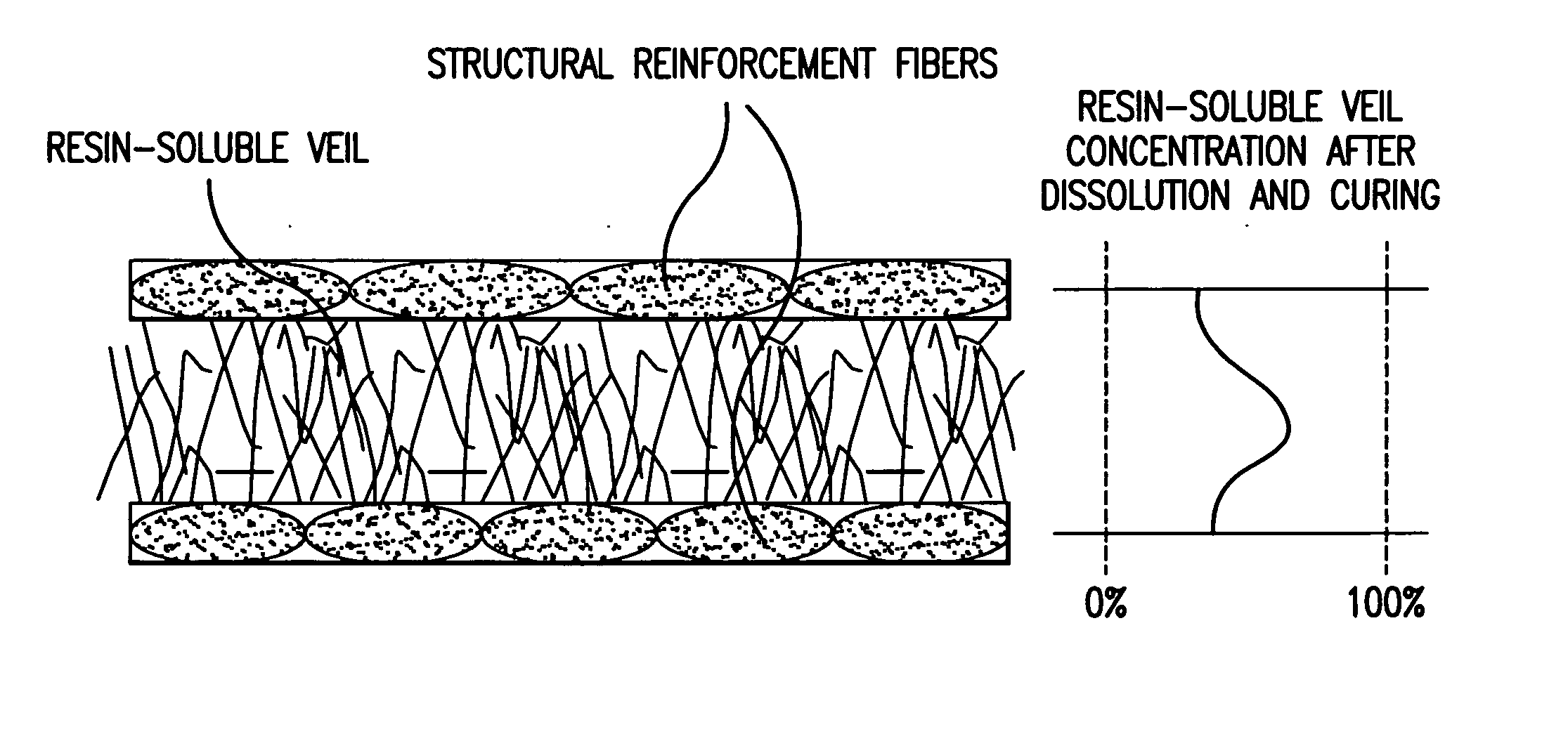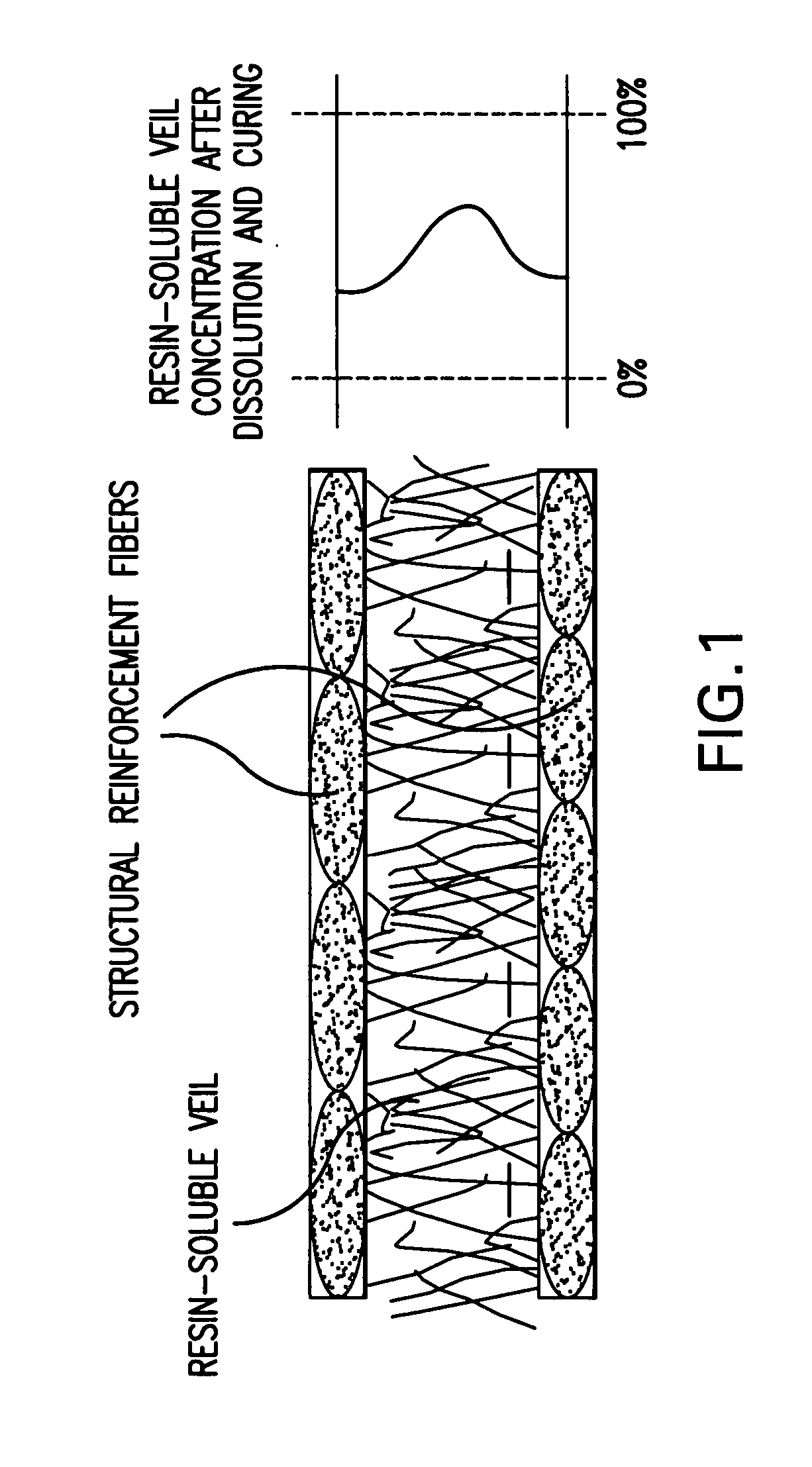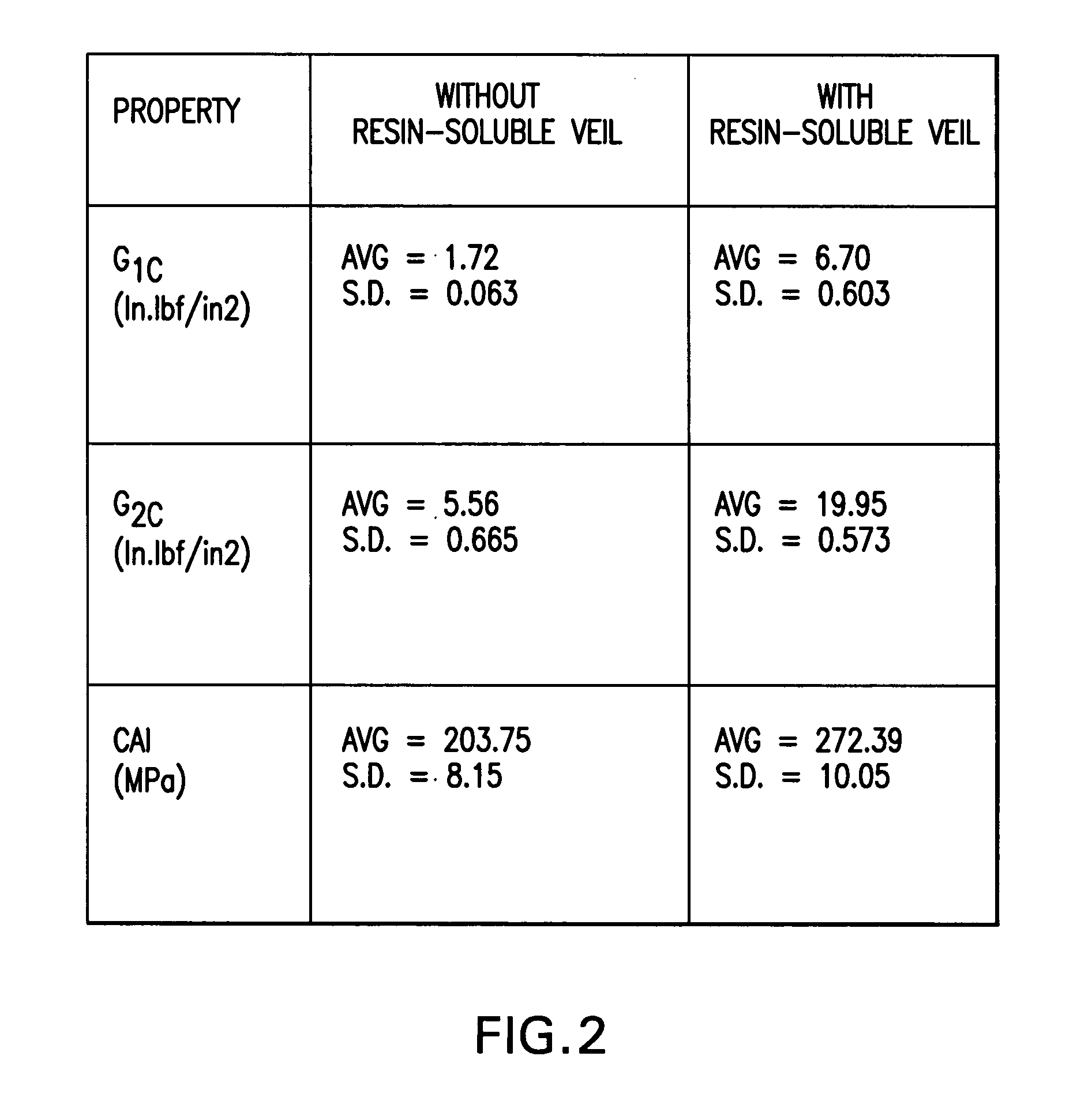Resin-soluble thermoplastic veil for composite materials
a thermoplastic veil and resin-soluble technology, applied in weaving, other domestic articles, transportation and packaging, etc., can solve the problems of increased manufacturing costs, labor costs, and difficulty in forming complex shaped parts, and achieve the effect of reducing manufacturing costs, improving manufacturing efficiency, and controlling toughening locations
- Summary
- Abstract
- Description
- Claims
- Application Information
AI Technical Summary
Benefits of technology
Problems solved by technology
Method used
Image
Examples
example 1
Veil Manufacturing
[0189] 54 tex fibers made from a PES polymer are chopped to an average fiber length of 8 mm using a rotary blade chopper. The chopped fibers are then dispersed by hand on a release film and pressed between a press hot platens at 180° C. for 1 hour with a 15 bar piston pressure. The platens are then cooled down to 60° C. and the resulting product is extracted. The product has a dimension of 15×15″ and an AW of 60 gsm. The veil is stable and handleable for processing purposes during manufacture.
example 2
Veil Dissolution
[0190] A sample of veil made in the previous example (AW=60 gsm) weighing 10 grams is combined with 30 g of Cycom™ 977 20 resin by dipping the veil into the resin. The veil / resin combination is then placed in an oven at 130° C. for 1 hour. The resulting product is then observed under a microscope. The microscopic observation shows a homogeneous solution without visible traces of undissolved fibers or high concentration of thermoplastic.
example 3
Composite Manufacturing
[0191] Layers of a HTA-6K-370 GSM 5HS carbon fabric were interleafed with non-woven fabrics to manufacture RTM panels with a Vf=55% and a target thermoplastic content of 25% wt in the resin (54 gsm in the fabric). FIG. 4 illustrates this resin infusion process while FIG. 5 illustrates the veil and reinforcement fiber orientation.
[0192] The results show that the insertion of the non-woven veil provides compression after impact (CAI) testing numbers equivalent to traditional toughened prepreg systems using the non-woven resin-soluble veil. The key mechanical properties were tested and the results are reported in Table 1 below:
TABLE 1
PUM
| Property | Measurement | Unit |
|---|---|---|
| Temperature | aaaaa | aaaaa |
| Weight | aaaaa | aaaaa |
| Solubility (mass) | aaaaa | aaaaa |
Abstract
Description
Claims
Application Information
 Login to View More
Login to View More - R&D
- Intellectual Property
- Life Sciences
- Materials
- Tech Scout
- Unparalleled Data Quality
- Higher Quality Content
- 60% Fewer Hallucinations
Browse by: Latest US Patents, China's latest patents, Technical Efficacy Thesaurus, Application Domain, Technology Topic, Popular Technical Reports.
© 2025 PatSnap. All rights reserved.Legal|Privacy policy|Modern Slavery Act Transparency Statement|Sitemap|About US| Contact US: help@patsnap.com



